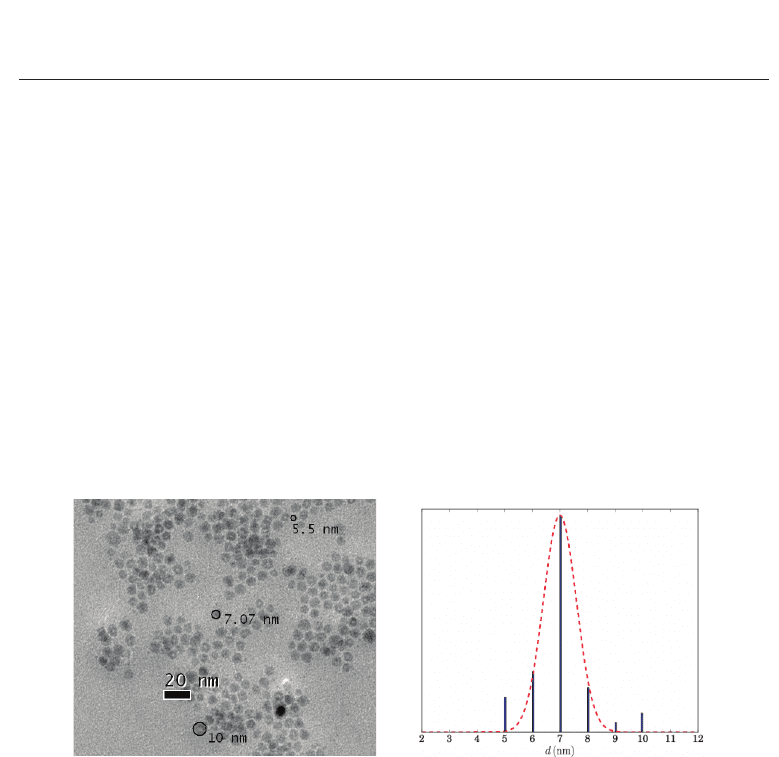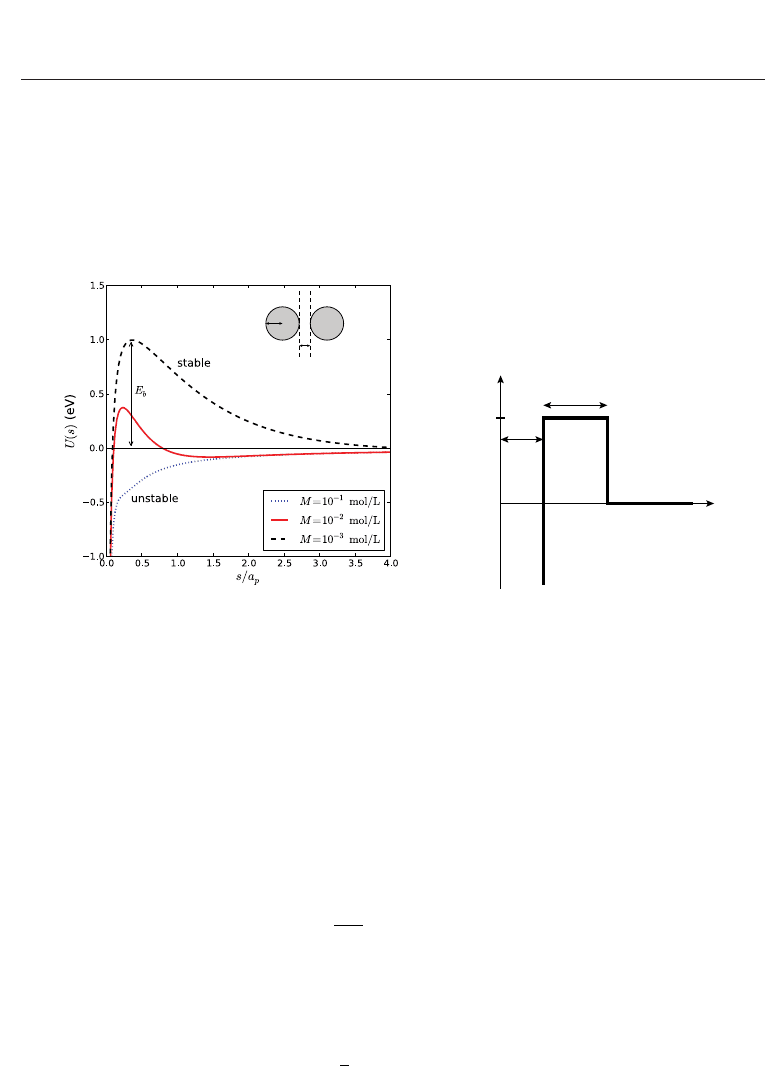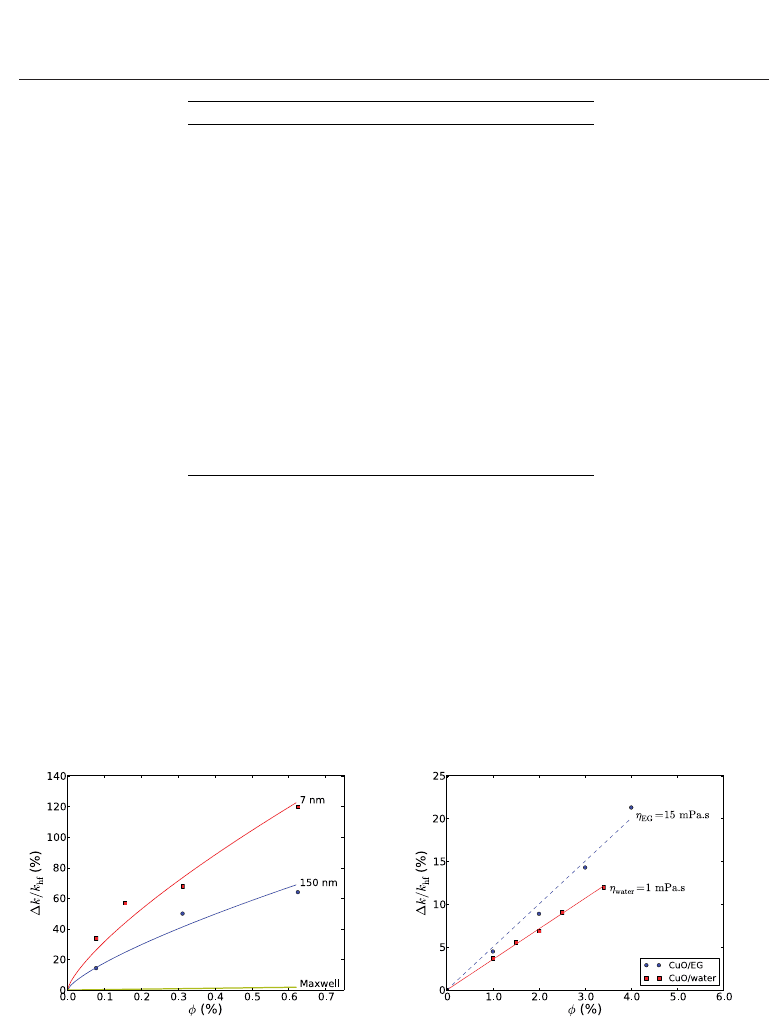Ahsan A. Two Phase Flow, Phase Change and Numerical Modeling
Подождите немного. Документ загружается.


1. Introduction
1.1 A need for energy saving
The global warming and nuclear or ecological disasters are some current events that show
us that it is urgent to better consider renewable energy sources. Unfortunately, as shown by
figures of the International Energy Agency (IEA), clean energies like solar, geothermal or wind
power represent today only a negligible fraction of the energy balance of the planet. During
2008, the share of renewable energies accounted for 86 Mtoe, only 0.7% of the 12,267 Mtoe of
global consumption. Unfortunately, the vital transition from fossil fuels to renewable energies
is very costly in time and energy, as evidenced by such high costs of design and fabication
of photovoltaic panels. Thus it is accepted today that a more systematic use of renewable
energy is not sufficient to meet the energy challenge for the future, we must develop other
ways such as for example improving the energy efficiency, an area where heat transfers play
an important role.
In many industrial and technical applications, ranging from the cooling of the engines and
high power transformers to heat exchangers used in solar hot water panels or in refrigeration
systems, the low thermal conductivity k of most heat transfer fluids like water, oils or
ethylene-glycol is a significant obstacle for an efficient transfer of thermal energy (Table 1).
liquids:
Ethylen
Glycol
(EG)
Glycerol
(Gl)
Water (Wa)
Thermal
Compound
(TC)
k (W/mK) 0.26 0.28 0.61 ≈ 0.9
metals: Iron Aluminium Copper Silver CNT
k (W/mK) 80 237 400 429 ≈ 2500
Table 1. Thermal conductivities k of some common materials at RT.
The improvement of heat transfer efficiency is an important step to achieve energy savings
and, in so doing, address future global energy needs. According to Fourier’s law j
Q
= −k∇T,
an increase of the thermal conductivity k will result in an increase of the conductive heat flux.
Thus one way to address the challenge of energy saving is to combine the transport properties
of some common liquids with the high thermal conductivity of some common metals (Table 1)
such as copper or novel forms of carbon such as nanotubes (CNT). These composite materials
involve the stable suspension of highly conducting materials in nanoparticulate form to the
17
Nanofluids for Heat Transfer
Rodolphe Heyd
CRMD UMR6619 CNRS/Orléans University
France
17

2 Will-be-set-by-IN-TECH
fluid of interest and are named nanofluids, a term introduced by Choi in 1995 (Choi, 1995).
A nanoparticle (NP) is commonly defined as an assembly of bounded atoms with at least
one of its characteristic dimensions smaller than 100 nm. Due to their very high surface
to volume ratio, nanoparticles exhibit some remarkable and sometimes new physical and
chemical properties, in some way intermediate between those of isolated atoms and those
of bulk material.
1.2 Some applications and interests of nanocomposites
Since the first report on the synthesis of nanotubes by Iijima in 1991 (Iijima, 1991), there has
been a sharp increase of scientific interest about the properties of the nanomaterials and their
possible uses in many technical and scientific areas, ranging from heat exchange, cooling
and lubrication to the vectorization of therapeutic molecules against cancer and biochemical
sensing or imaging. The metal or metal oxides nanoparticles are certainly the most widely
used in these application areas.
It has been experimentally proved that the suspension in a liquid of some kinds of
nanoparticles, even in very small proportions (<1% by volume), is capable of increasing the
thermal conductivity of the latter by nearly 200% in the case of carbon nanotubes (Casquillas,
2008; Choi et al., 2001), and approximately 40% in the case of copper oxide nanoparticles
(Eastman et al., 2001). Since 2001, many studies have been conducted on this new class
of fluids to provide a better understanding of the mechanisms involved, and thus enable
the development of more efficient heat transfer fluids. The high thermal conductivity of
the nanofluids designates them as potential candidates for replacement of the heat carrier
fluids used in heat exchangers in order to improve their performances. It should be noted
that certain limitations may reduce the positive impact of nanofluids. Thus the study of the
performance of cooling in the dynamic regime showed that the addition of nanoparticles in
a liquid increases its viscosity and thereby induces harmful losses (Yang et al., 2005). On the
other hand, the loss of stability in time of some nanofluids may result in the agglomeration
of the nanoparticles and lead to a modification in their thermal conduction properties and to
risks of deposits as well as to the various disadvantages of heterogeneous fluid-flow, like
abrasion and obstruction. Nevertheless, in the current state of the researches, these two
effects are less important with the use of the nanofluids than with the use of the conventional
suspensions of microparticles (Daungthongsuk & Wongwises, 2007). We must not forget to
take into account the high ecological cost of the synthesis of the NPs, which often involves a
large number of chemical contaminants. Green route to the synthesis of the NPs using natural
substances should be further developed (Darroudi et al., 2010).
2. Preparation of thermal nanofluids
2.1 Metal nanoparticles synthesis
2.1.1 Presentation
Various physical and chemical techniques are available for producing metal nanoparticles.
These different methods make it possible to obtain free nanoparticles, coated by a polymer or
encapsulated into a host matrix like mesoporous silica for example. In this last case, they are
protected from the outside atmosphere and so from the oxidation. As a result of their very
high surface to volume ratio, NPs are extremely reactive and oxidize much faster than in the
bulk state. The encapsulation also avoids an eventual agglomeration of the nanoparticles
390
Two Phase Flow, Phase Change and Numerical Modeling

Nanofluids for Heat Transfer 3
as aggregates (clusters) whose physico-chemical properties are similar to that of the bulk
material and are therefore much less interesting. The choice of a synthesis method is dictated
by the ultimate use of nanoparticles as: nanofluids, sensors, magnetic tapes, therapeutic
molecules vectors,etc. Key factors for this choice are generally: the size, shape, yield and
final state like powder, colloidal suspension or polymer film.
2.1.2 Physical route
The simplest physical method consists to subdivide a bulk material up to the nanometric
scale. However, this method has significant limitations because it does not allow precise
control of size distributions. To better control the size and morphology, we can use other
more sophisticated physical methods such as:
• the sputtering of a target material, for example with the aid of a plasma (cathode
sputtering), or with an intense laser beam (laser ablation). K. Sakuma and K. Ishii have
synthesized magnetic nanoparticles of Co-Pt and Fe with sizes ranging from 4 to 6 nm
(Sakuma & Ishii, 2009).
• the heating at very high temperatures (thermal evaporation) of a material in order that the
atoms constituting the material evaporate. Then adequate cooling of the vapors allows
agglomeration of the vapor atoms into nanoparticles (Singh et al., 2002).
The physical methods often require expensive equipments for a yield of nanoparticles often
very limited. The synthesized nanoparticles are mostly deposited or bonded on a substrate.
2.1.3 Chemical route
Many syntheses by the chemical route are available today and have the advantage of being
generally simple to implement, quantitative and often inexpensive. Metallic NPs are often
obtained via the reduction of metallic ions contained in compounds like silver nitrate, copper
chloride, chloroauric acid, bismuth chloride, etc.
We only mention here a few chemical methods chosen among the most widely used for the
synthesis of metal and metal oxides NPs:
Reduction with polymers: schematically, the synthesis of metal nanoparticles (M) from a
solution of M
+
ions results from the gradual reduction of these ions by a weak reducing
polymer (suitable to control the final particle size) such as PVA (polyvinyl alcohol) or PEO
(polyethylene oxide). The metal clusters thus obtained are eventually extracted from the
host polymer matrix by simple heating. The size of the synthesized metal nanoparticles
mainly depends on the molecular weight of the polymer and of the type of metal ions. For
example with PVA (M
w
= 10000) we obtained (Hadaoui et al., 2009) silver nanoparticles
with a diameter ranging from 10 to 30 nm and copper nanoparticles with a diameter of
about 80 nm.
Gamma radiolysis: the principle of radiolytic synthesis of nanoparticles consists in reducing
the metal ions contained in a solution through intermediate species (usually electrons)
produced by radiolysis. The synthesis can be described in three parts (i) radiolysis of the
solvent, (ii) reduction reaction of metal ions by species produced by radiolysis followed by
(iii) coalescence of the produced atoms (Benoit et al., 2009; Ramnani et al., 2007; Temgire
et al., 2011).
391
Nanofluids for Heat Transfer

4 Will-be-set-by-IN-TECH
Thermal decomposition: the synthesis by the thermal decomposition of an organometallic
precursor allows to elaborate various systems of nanoparticles (Chen et al., 2007; Liu
et al., 2007; Roca et al., 2006; Sun et al., 2004) or carbon nanotubes (Govindaraj & Rao,
2002). This method is widely used because of its ease and of the reproducibility of
the synthesis, as well as the uniformity in shape and size of the synthesized particles.
Metal particles such as Au, Ag, Cu, Co, Fe, FePt, and oxides such as copper oxides,
magnetite and other ferrites have been synthesized by this method. It mainly consists
of the decomposition of an organometallic precursor dissolved in an organic solvent (like
trioctylamine, oleylamine, etc.) with high boiling points and containing some surfactants
(so called capping ligands) like oleic acid, lauric acid, etc. By binding to the surface of the
NPs, these surfactants give rise to a steric barrier against aggregation, limiting the growing
phase of the nanoparticles. Basing on the choice of the ligand properties (molecular length,
decomposition temperature) and on the ligand/precursor ratio, it is possible to control the
size and size distribution of the synthesized NPs (Yin et al., 2004).
Using the thermal decomposition of the acetylacetonate copper precursor dissolved in
oleylamine in the presence of oleic acid, we have synthesized copper oxide nanoparticles
of mean diameter 7 nm with a quasi-spherical shape and low size dispersion (Fig. 1).
Fig. 1. TEM picture of copper oxides nanoparticles synthesized by the thermal
decomposition of acetylacetonate copper precursor dissolved in oleylamine (Hadaoui, 2010).
2.1.4 Characterization of the nanoparticles
Depending on the final state of the nanoparticles, there are several techniques to visualize
and characterize them: the X-ray diffraction, electron microscopy (TEM, cryo-TEM, etc.), the
atomic force microscopy, photoelectron spectroscopy like XPS. More macroscopic methods
like IR spectroscopy and UV-visible spectroscopy are interesting too in the case where there is
a plasmonic resonance depending on the size of the NPs like for example in the case of silver
and gold.
The Dynamic Light Scattering (DLS) is a well established technique to measure hydrodynamic
sizes, polydispersities and aggregation effects of nanoparticles dispersed in a colloidal
suspension. This method is based on the measurement of the laser light scattering fluctuations
due to the Brownian motion of the suspended NPs. In the case of opaque nanofluids, only the
backscattering mode of DLS is able to provide informations on NPs characteristics.
392
Two Phase Flow, Phase Change and Numerical Modeling

Nanofluids for Heat Transfer 5
2.2 Stability of colloidal suspensions
2.2.1 Presentation
The nanofluids belong to the class of Solid/Liquid colloidal systems where a solid phase is
very finely dispersed in a continous liquid phase. Most of nanofluids are prepared by direct
injection of nanoparticles in the host liquid, depending on the nature of this liquid (water,
ethylene glycol (EG), oils, glycerol, etc.) it may be necessary to add chemicals to the solution
to avoid coagulation and ensure its stability by balancing internal forces exerted on particles
and slowing down agglomeration rates. This addition can dramatically change the physical
properties of the base liquid and give disappointing results.
2.2.2 Isolated spherical particle immersed in a fluid
We consider a spherical particle of radius a
p
, density ρ
p
, immersed in a fluid of density ρ
f
and
dynamical viscosity η, placed at rest in the gravitational field g assumed to be uniform (Fig.
2(a)). Under the effect of its weight P
= ρ
p
V
p
g and of the buoyancy F
A
= −ρ
f
V
p
g due to the
fluid, the particle moves with velocity v that obeys to the equation of motion m
p
dv
dt
= ΔF + F
v
,
where ΔF
= P + F
A
= V
p
(ρ
p
− ρ
f
)g and F
v
is the viscous drag exerted by the fluid on the
particle. In the limit of laminar flow at very low Reynolds numbers Re
= ρ
f
v2a
p
/η 1, we
can write the Stokes law for a sphere as F
v
= −6πa
p
ηv. We deduce from these hypotheses
the following equation satisfied by the velocity of the sphere:
dv
dt
+
6πηa
p
ρ
p
V
p
v =
1
−
ρ
p
ρ
f
g (1)
As we can see from (1), if ρ
p
> ρ
f
, agglomeration leads to sedimentation and on the other
hand if ρ
p
< ρ
f
agglomeration leads to skimming. After a characteristic time τ = 2ρ
p
a
2
p
/9η
generally very short, the velocity of the sphere reaches a constant limiting value v
(Fig. 2(a))
whose magnitude is given by:
v
=
2g|ρ
p
−ρ
f
|a
2
p
9η
(2)
Based on previous results, we can preserve the stability of water-based nanofluids by limiting
a
p
, that is by limiting the agglomeration of nanoparticles. In the case of viscous host media (like
glycerol or gels), stability is generally guaranteed, even for large agglomerates.
2.2.3 Coagulation of nanoparticles
2.2.3.1 Presentation
The coagulation between two particles may occur if:
1. the particles are brought close enough from each other in order to coagulate. When a
colloid is not stable, the coagulation rate depends of the frequency at which the particles
collide. This dynamic process is mainly a function of the thermal motion of the particles, of
the fluid velocity (coagulation due to shear), of its viscosity and of the inter-particles forces
(colloidal forces).
2. during the collision the energy of the system is lowered by this process. This decrease
in energy originates from the forces, called colloidal forces, acting between the particles
in suspension. The colloidal forces are mainly composed of electrostatic repulsive forces
393
Nanofluids for Heat Transfer

6 Will-be-set-by-IN-TECH
G
ΔF
F
v
g
v
Liquid
t
|v|
v
τ0
(a) Dynamics of a spherical particle immersed in
a liquid at rest.
radius a
p
Water Glycerol
5 nm 400 d 420531 d
50 nm 4 d 4205 d
100 nm 1 d 1051 d
(b) Values (in days) of the time taken by
cupric oxide NPs to travel a distance h
=
1 cm in different liquids and for various
radii.
Fig. 2. A simple mechanical model to discuss the stability of the nanofluids in the terrestrial
gravitational field.
and Van der Waals type forces. The electrostatic forces, always present in the case of
water-based nanofluids, are due to the presence of ionised species on the surface of the
particles, inducing an electric double layer. More this double-layer is important, the more
the particles repel each other and more stable is the solution. The Van der Waals type
forces are due to the interactions between the atoms constituing the NPs.
2.2.3.2 DLVO theory
For a system where the electrostatic forces and the Van der Waals forces are dominant, as in
the case of water-based nanofluids, the DLVO theory establishes that a simple combination
of the two corresponding interaction energies, respectively U
e
(s) and U
VW
(s), is sufficient to
explain any tendency to the aggregation of the suspension. This concept was developed by
Derjaguin and Landau and also by Vervey and Overbeck.
In the case of two identical interacting spherical particles with radius a
p
, separated by a
distance s (Fig. 3), it is possible (Masliyah & Bhattarjee, 2006) to write the DLVO interaction
energy U
(s) as:
U
(s)=U
e
(s)+U
VW
(s)
=
2πa
p
r
0
ψ
2
S
ln
1 + e
−s/κ
−1
−
A
H
a
p
12s
(3)
where A
H
is the Hamaker’s constant (A
H
≈ 30 × 10
−20
J for copper NPs in water),
0
is the
permittivity of vacuum,
r
is the dielectric constant of the host fluid (
r
= 78.5 for water at
RT), ψ
S
is the surface electrical potential of NPs and κ
−1
is the Debye length defined by:
κ
−1
=
10
3
N
A
e
2
0
r
k
B
T
N
∑
i=1
z
2
i
M
i
−1/2
(4)
where z
i
is the valence of i
th
ionic species and M
i
is its moalrity, N
A
is the Avogadro number,
k
B
is the Boltzmann constant, e is the elementary charge and T is the absolute temperature
394
Two Phase Flow, Phase Change and Numerical Modeling

Nanofluids for Heat Transfer 7
of the colloid. The Debye length gives an indication of the double layer thickness, thus more
κ
−1
is important, better is the stability of the suspension. Introducing the ionic strength I =
∑
N
i
=1
z
2
i
M
i
/2, we see from (4) that using high values of I makes the suspension unstable. It is
therefore recommended to use highly deionized water to prepare water-based nanofluids.
As can be seen on Fig. 3(a), the colloidal suspension is all the more stable that there is a
significant energy barrier E
b
, preventing the coagulation of nanoparticles.
s
a
p
(a) DLVO interaction energy and stability tendencies
of copper oxide spherical NPs suspended in water
at RT and using symetric electrolytes with different
molarities M and ψ
S
= 0.1 V.
r
U(r)
0
2a
p
1/κ
E
b
(b) Approximate DLVO interaction
potentiel used to calculate the
frequency collision function K
.
Fig. 3. DLVO interaction energy in the case of two identical spheres. We recall that
1eV
≈ 39 k
B
T at RT and r = s + 2a
p
is the distance between the centers of two particles.
2.2.3.3 Dynamics of agglomeration
If on the one hand the colloidal forces are a key factor to discuss the stability of a suspension,
on the other hand the dynamics of the collisions is another key factor.
We note J
+
k
> 0 the rate of formation per unit volume of particles of volume v
k
and J
−
k
< 0
the rate of disappearance per unit volume. With these notations the net balance equation for
the k
th
species is written as:
dn
k
dt
= J
+
k
+ J
−
k
(5)
where n
k
is the number of particles of the k
th
species per unit volume. Von Smoluchowski
proposed the following expressions of J
+
k
and J
−
k
to describe the formation of any aggregate
of volume v
k
:
J
+
k
=
1
2
i=k−1
∑
i=1;v
i
+v
j
=v
k
β
ij
n
i
n
j
(6)
J
−
k
= −
N
p
∑
i=1
β
ki
n
i
n
k
(7)
395
Nanofluids for Heat Transfer

8 Will-be-set-by-IN-TECH
where β
ij
is the collision frequency function and N
p
is the total number of particles species
or equivalently of different volumes. The 1/2 factor in (6) takes care of the fact that v
i
+ v
j
=
v
j
+ v
i
. The collision frequency function β
ij
is the key insight of the kinetics of coagulation and
is tightly dependent of several factors such as: the Brownian motion (thermal motion) or the
deterministic motion (fluid-flow) of the fluid, the nature of the inter-particles forces and of the
aggregation ("touch-and-paste" or "touch-and-go", the last case requiring then many collisions
before permanent adhesion). If we consider the simplest case of an initially monodisperse
colloidal particles modeled as hard spheres and only submitted to Brownian motion, the
collision frequency function is given (Masliyah & Bhattarjee, 2006) by:
K
= β
kk
=
8k
B
T
3η
(8)
This simple result shows once again that the use of viscous fluids host significantly slows the
onset of aggregation of nanofluids.
We now need an estimate of the time t
1/2
needed for the coagulation for example of one half
of the initial population of nanoparticles. For simplicity we suppose that there is only binary
collisions of identical particles of kind
(1) and volume v
1
. We assume that every collision
leads by coagulation to the formation of a particle of kind
(2) and volume v
2
= 2v
1
and that
this particle deposits as a sediment without undergoing another collisions. Using relations
(5), (6) and (7) we write:
dn
1
dt
= −β
11
n
2
1
⇒ n
1
(t)=
n
1
(0)
1 + β
11
n
1
(0)t
(9)
dn
2
dt
=
1
2
β
11
n
2
1
⇒ n
2
(t)=
1/2β
11
n
2
1
(0)t
1 + β
11
n
1
(0)t
(10)
where n
1
(0) is the initial number of particles per unit volume. Introducing t
1/2
= 1/β
11
n
1
(0),
recalling that the volume fraction of NPs is written as φ
= 4/3πa
3
p
n
1
(0) and using (8), the
time t
1/2
can be expressed as:
t
1/2
=
ηπa
3
p
2φk
B
T
(11)
In the case of a water-based nanofluid containing a volume fraction φ
= 0.1% of identical
spherical particles with radius a
p
= 10 nm, we found with our model that t
1/2
= 0.38 ms at
RT, which is a quite small value! The relation (11) qualitatively shows that it is preferable to
use low NPs volume fractions suspended in viscous fluids. For the same volume fractions,
small NPs aggregate faster than the bigger.
A more sophisticated approach includes the colloidal forces between particles. Using
an approximated DLVO potential of the form represented Fig. 3(b) can lead to the
following approximated expression of the frequency collision function K
taking into account
interactions:
K
= 2a
p
κ exp
−
E
b
k
B
T
K (12)
We will retain from this expression that more the colloidal forces are repulsive (E
b
/k
B
T 1),
more the coagulation of particles is slow and the solution is stable over time.
396
Two Phase Flow, Phase Change and Numerical Modeling

Nanofluids for Heat Transfer 9
2.2.3.4 How to control aggregation in nanofluids?
The preceeding studies have shown that, to control the agglomeration of NPs in the
suspension and avoid settling, it is recommended to use:
• viscous host fluids with high value of the dielectric constant, low particles volume fraction
φ and not too small particles ;
• pure highly desionized water with low values of the ionic strength I (in the case of
water-based nanofluids);
• pH outside the region of the isoelectric point for the case of amphoteric NPs (like silica and
metal oxides) suspended in water. The isoelectric point (IEP) may be defined as the pH at
which the surface of the NP exhibits a neutral net electrical charge or equivalently a zero
zeta potential ζ
= 0 V. For this particular value of ζ there are only attractive forces of Van
der Waals and the solution is not stable. For example in the case of copper oxide NPs
suspended in water, IEP
(CuO) ≈ 9.5 at RT and a neutral or acid pH 7 promotes the
stability of the suspension.
• surface coating with surfactants or with low molecular weight (M
w
< 10000) neutral
polymers highly soluble in the liquid suspension. They allow to saturate the surface of NPs
without affecting the long range repulsive electrostatic force. In contrast this polymeric
shell induces steric effects that may dominate the short distances attractive Van der Waals
interaction. Thus forces are always repulsive and the solution is stable. In a sense the
presence of the polymer shell enhances the value of the energy barrier E
b
.
• high power sonication to break agglomerates and disperse particles.
It is important to mention here that the surface treatments we presented above allow to
enhance the stability of the suspension and to control the aggregation, but unfortunately they
certainly also have a deep impact on the heat transfer properties of the nanofluid and should
be considered carefully. The control of the NPs surface using polymer coating, surfactants
or ions grafting, introduces unknown thermal interfacial resistances which can dramatically
alter the benefit of using highly conductive nanoparticles.
3. Thermal transfer coefficients of nanofluids
3.1 Presentation
The use of suspended nanoparticles in various base fluids (thermal carriers and biomedical
liquids for example) can alter heat transfer and fluid flow characteristics of these base fluids.
Before any wide industrial application can be found for nanofluids, thorough and systematic
studies need to be carried out. Apart of the potential industrial applications, the study of
the nanofluids is of great interest to the understanding of the mechanisms involved in the
processes of heat transfer to the molecular level. Experimental measurements show that
the thermal properties of the nanofluids do not follow the predictions given by the classical
theories used to describe the homogeneous suspensions of solid micro-particles in a liquid.
Despite the large number of published studies on the subject in recent years, today there is no
unique theory that is able to properly describe the whole experimental results obtained on the
nanofluids.
397
Nanofluids for Heat Transfer

10 Will-be-set-by-IN-TECH
Fluids Particles, size (nm) φ (%) Improvement (%)
EG CuO, 18.6 4 20
water CuO, 18.6 4.3 10
GL Cu
2
O, 7.0 0.6 120
GL Cu
2
O, 150 0.6 60
EG Cu, 10 0.2 40
PO Cu, 35 0.06 45
water Cu, 100 7.5 75
water TiO
2
,15 4 33
water TiO
2
, 27 4.3 10.6
water Al
2
O
3
,60 5 20
EG Al
2
O
3
,60 5 30
PO Al
2
O
3
,60 5 40
water Al
2
O
3
, 10 0.5 100
water Al
2
O
3
,20 1 16
oil MWCNTs, 25 1.0
250
water MWCNTs, 130 0.6 34
Table 2. Some significant results relating to the improvement of the thermal conductivity of
nanofluids at RT. PO: pump oil; EG: ethylene glycol; GL: glycerol
3.2 Experimental results
Since the pioneering works of Choi, many experimental studies have been conducted on
thermal nanofluids and have shown very large dispersion in the results. There is a profusion
of very varied experimental results, sometimes contradictory, so it is very difficult for the
novice and sometimes even for the specialist to identify a trend in the contribution of thermal
nanofluids for heat transfer. We have gathered in Tab. 2 some of the the most significant results
published to date on the improvement of the thermal conductivity of nanofluids containing
metallic particles, oxides particles or CNTs. We can identify several trends and indications
(a) Enhancement as a function of NPs size and
volume fraction in the case of Cu
2
O/glycerol
nanofluid.
(b) Enhancement as a function of host fluid
viscosity and volume fraction.
Fig. 4. Thermal conductivity enhancement of nanofluids at RT. k
hf
is the thermal conductivity
of the host fluid at RT.
398
Two Phase Flow, Phase Change and Numerical Modeling
